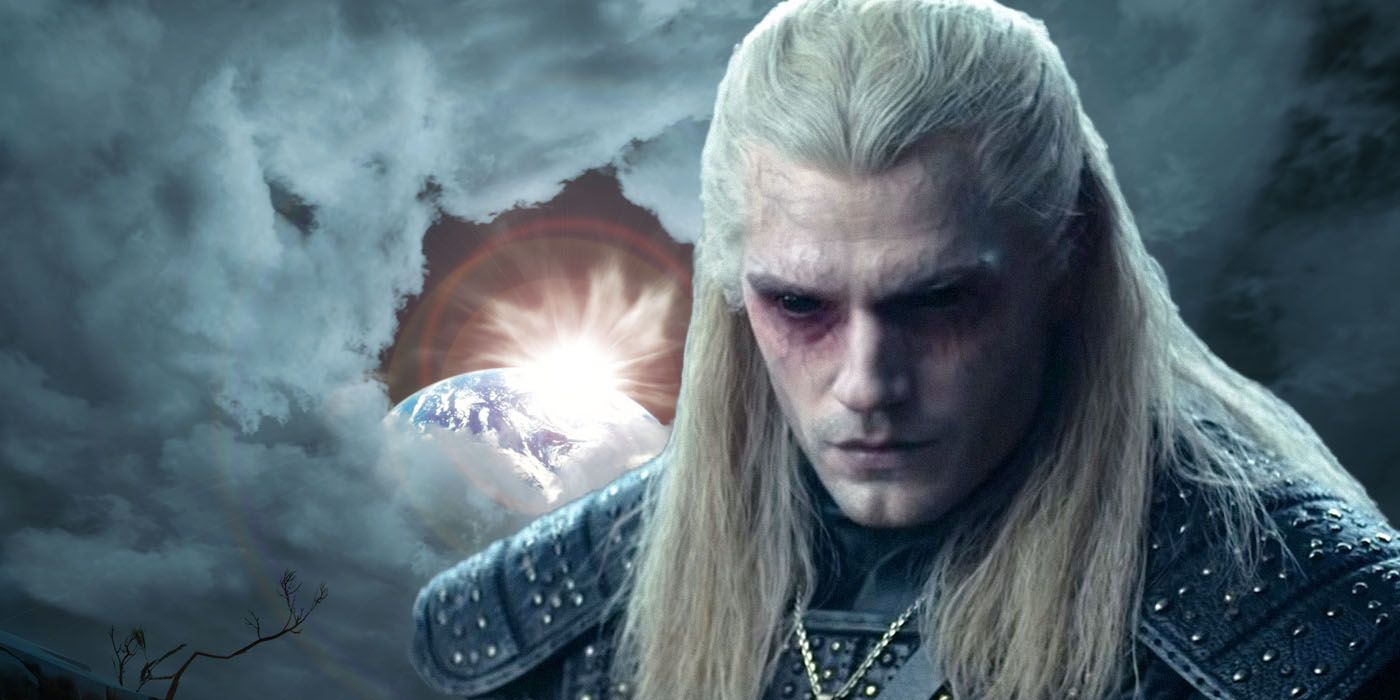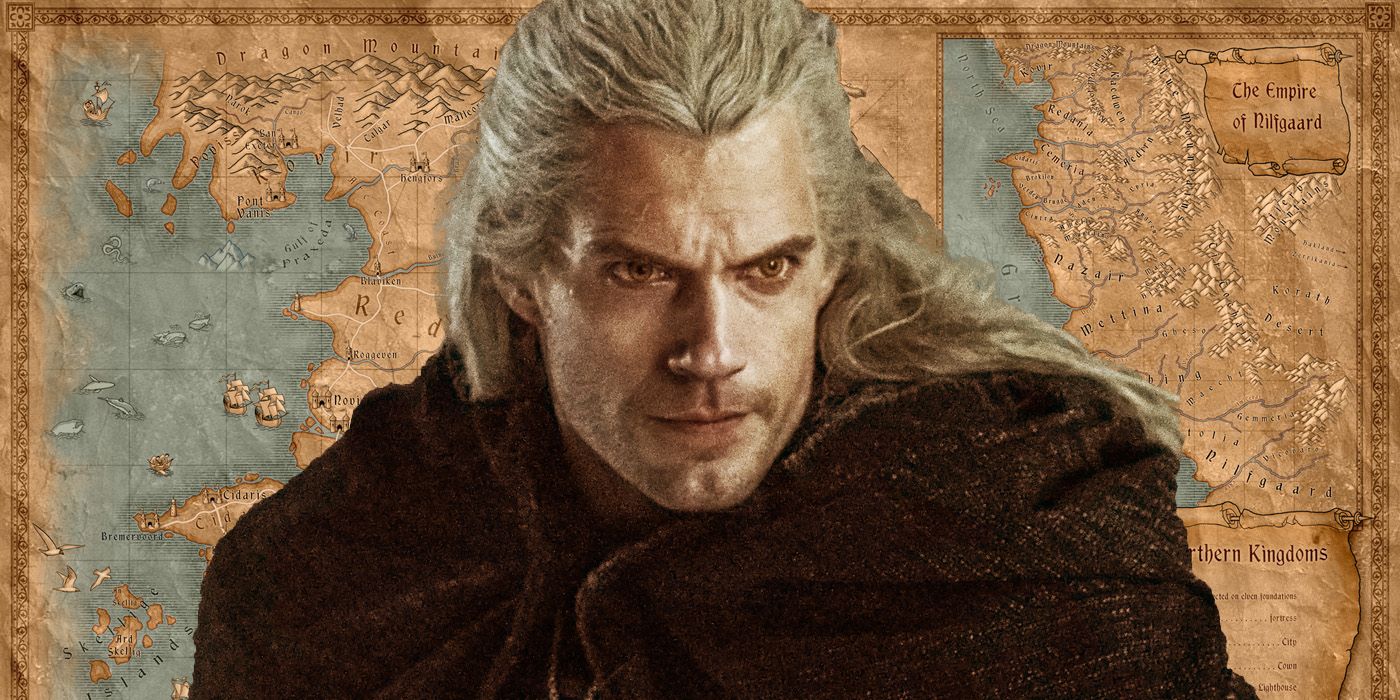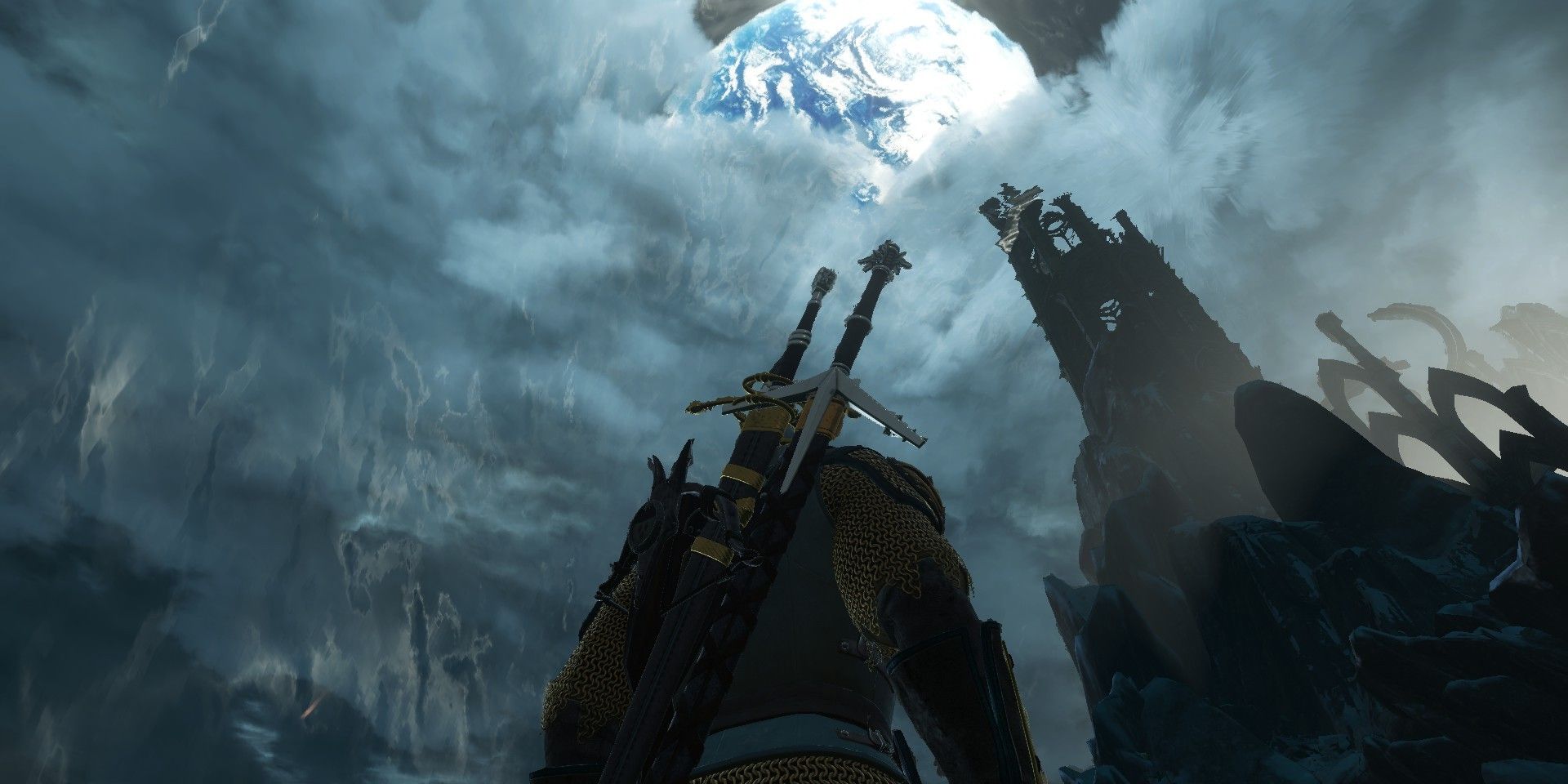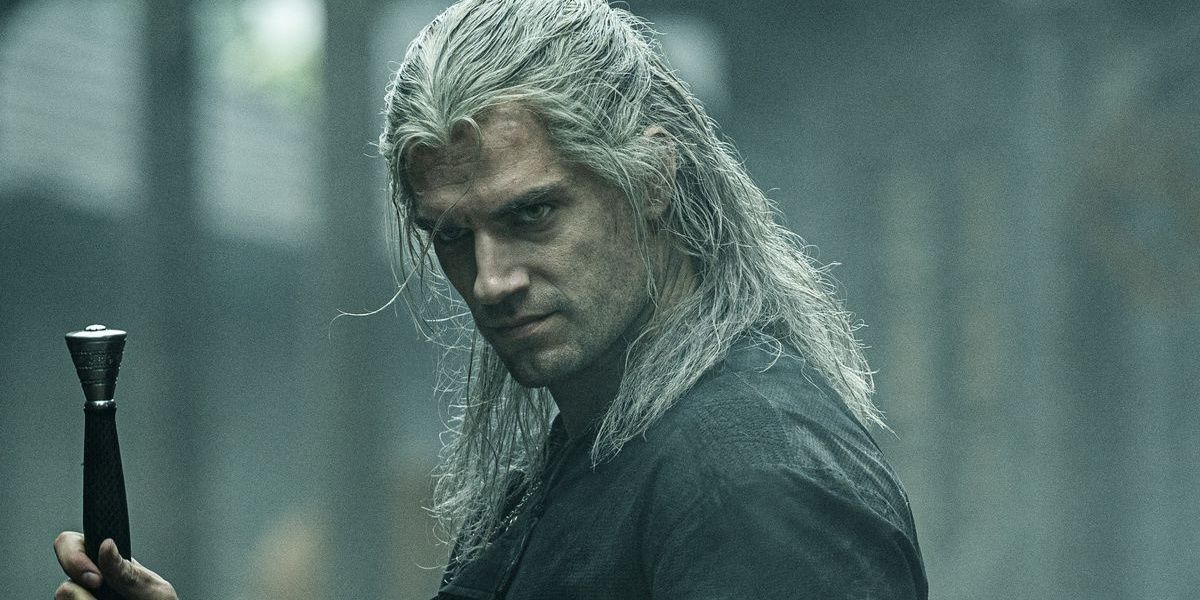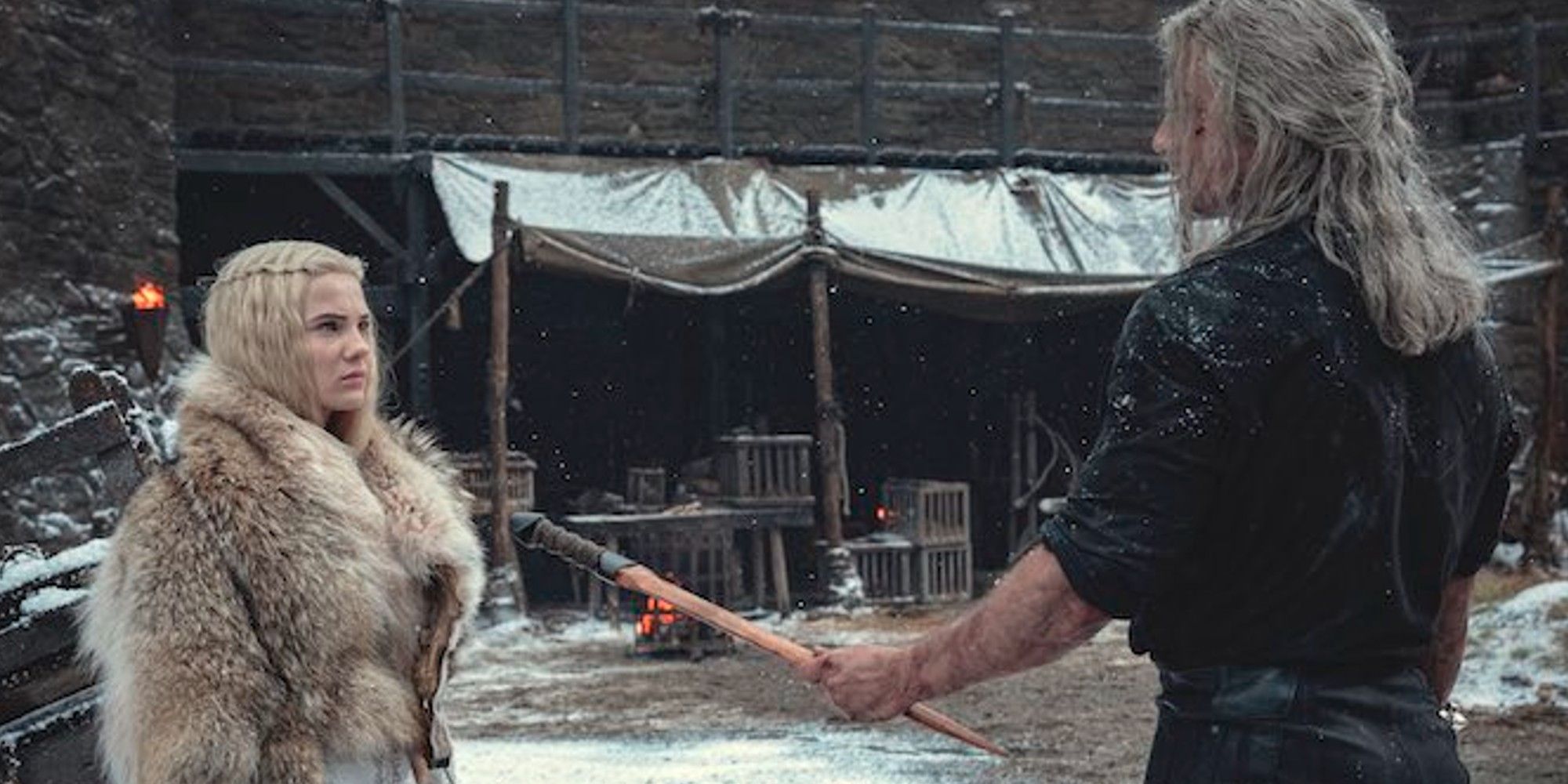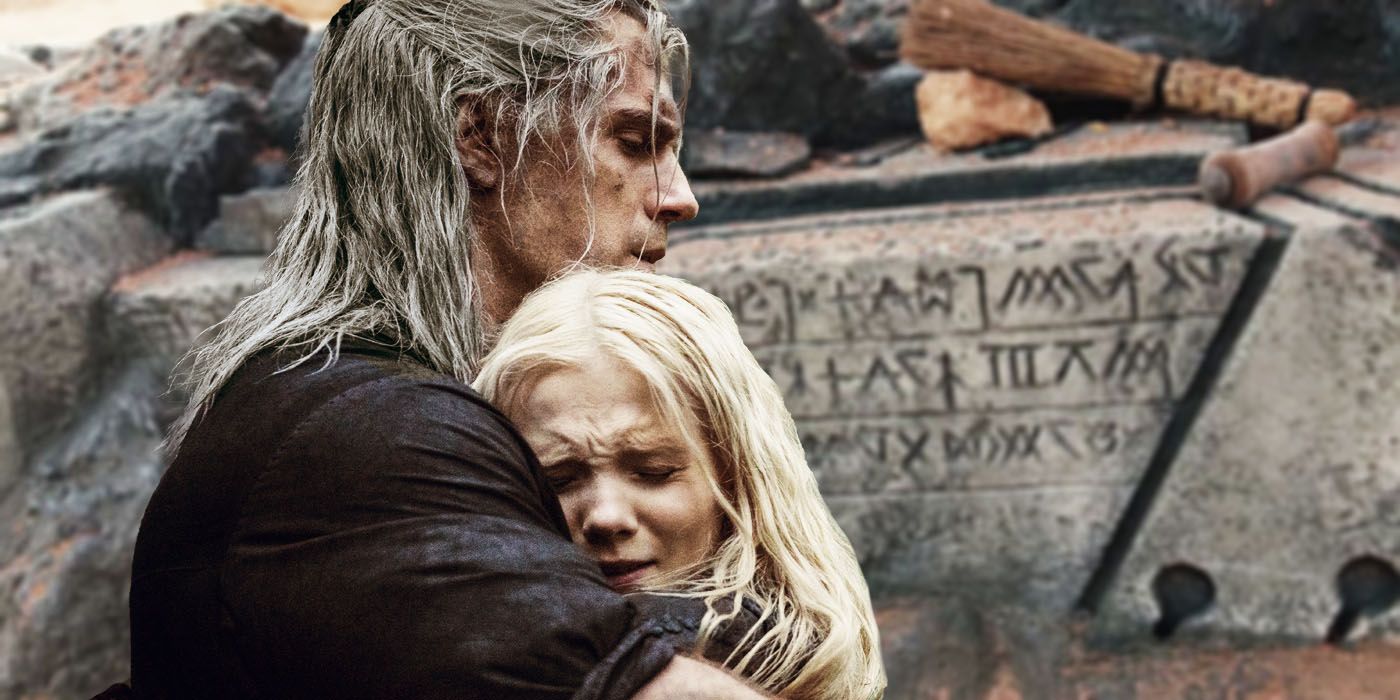Warning: Spoilers for The Witcher season 2.
The Witcher season 2 has shed more light on the Conjunction of the Spheres, likely to prepare for the upcoming prequel series, Blood Origin. The Continent as fans see it in The Witcher was effectively born during this cataclysmic event, when different dimensions collided and left humans and monsters alike stranded on the Continent, which had previously only been inhabited by Elder Races like elves and dwarves.
A new behind-the-scenes feature released on Netflix, Making the Witcher, explains the Conjunction of the Spheres for newcomers, and also offers a tease of what to expect from The Witcher: Blood Origin. The prequel series will tell the story of the very first Witcher, and how the clashing of monsters and men created a necessity for someone who would keep the monsters at bay. Blood Origin is set 1200 years before the start of The Witcher, so characters like Geralt and Yennefer won't appear in it. However, we can expect there to be ties between the two shows.
Here's what you need to know about the Conjunction of the Spheres, what the Witcher books' mythology reveals about the upcoming prequel, how The Witcher season 2 showcases the importance of the event, and how The Witcher itself sets up Blood Origin.
The Continent And The World Of The Witcher
Since The Witcher's opening credits don't have a helpful map of the Continent showing all the different locations (like Game of Thrones does), it can be difficult to get an idea of the show's geography as Geralt bounces around from place to place. The Witcher books, games, and TV show all take place on a continent known only by the straightforward name of the Continent. It's established in Andrzej Sapkowski's novel The Lady of the Lake that the Continent is indeed on a planet, and that this planet orbits a sun in a manner very similar to Earth: tilted slightly on its axis to create the seasons and orbiting in an elliptical shape. The nature of its orbit means that the planet is careening towards an apocalyptic ice age called the White Frost, which is referenced in Ciri's prophecy in The Witcher season 1.
The Continent is the extent of the known and mapped world in The Witcher, but it's not the only landmass on the planet. A vast ocean to the west and the Fiery Mountains to the east mark the edges of this known world, and are almost impossible to traverse. Gnomes, dwarves, elves, halflings and other Elder Races all existed on the planet prior to the Conjunction of the Spheres, but elves were not originally native to the Continent. In Blood of Elves, the dwarf warrior Yarpen Zigrin tells Ciri that the elves arrived on the Continent "in their white ships" around a thousand years before the arrival of humans (and before the Conjunction of the Spheres), indicating that the elves originally came from some land west of the Continent. The dwarves also migrated to the Continent from elsewhere, long before the elves did. Gnomes are the oldest known species on the Continent since they were already there when the dwarves arrived.
The Conjunction of the Spheres Explained
The Witcher takes place in a multiverse where the Continent is merely one of many worlds. The Conjunction of the Spheres was basically, as Netflix's The Witcher showrunner Lauren Hissrich puts it, "a bunch of different dimensions smashing into each other." For reasons unknown, an array of different worlds collided and created rifts through which species from other dimensions spilled into the world of the Continent — including both humans and monsters. The Witcher screenwriter Beau DeMayo describes the aftermath of the Conjunction of the Spheres as basically a "refugee situation" in which creatures and people from these other worlds were dumped onto the Continent and battled for dominance against each other and the Elder Races. As seen in The Witcher, it was ultimately the humans who came out on top, with elves and dwarves suffering dwindling numbers and being pushed to the edges of the world — although The Witcher season 2 has begun to suggest the elves may become a more potent threat once more in coming episodes.
DeMayo credits the success of this conquest with humans being "barbaric enough, war-hungry enough, and co-opting magic from the Elder Races." Yarpen puts it in rather more blunt terms when explaining the history of the Continent to Ciri in Blood of Elves, describing it as "a world where he who shatters the skulls of others most efficiently and swells women's bellies fastest, reigns. And it's as hard to compete with you people in murdering as it is in screwing." Humans not only had brutality on their side, but also reproduced in far greater numbers than elves and dwarves were capable of, and the human population quickly became dominant over all other intelligent races.
How The Conjunction Led To The First Witcher
Humans may have triumphed over elves and dwarves, but there were other threats that they had to contend with when they first settled on the Continent. Witchers emerged as a response to the monsters that threatened early human settlements: schools of elite trained warriors who had been subjected to magical experimentation that mutated their bodies, gave them special abilities, and enabled them to use limited magic. The books actually reveal very little about the early days of the witchers, other than that they were created by human mages who had harnessed the magic of the world and begun to twist it in ways that elves and dwarves never had. In that regard, Witcher: Blood Origin will have a lot more freedom to create its own canon than The Witcher, which primarily adapts stories from Sapkowski's books.
Despite their role in protecting humans from monsters, witchers are seen as a necessary evil rather than as heroes, and many consider them to be as much of an abomination as the creatures that they hunt. Based on what little we know of their origins, it seems like The Witcher: Blood Origin could be a Frankenstein-esque tale in which a mage successfully imbues a human with enough monstrous qualities to make them capable of fighting other monsters.
What The Witcher Season 2 Explains About The Conjunction Of The Spheres
Until the latter portion of The Witcher season 2, the concepts behind the Conjunction of the Spheres had largely remained a matter of gentle worldbuilding within the Netflix universe — something mentioned because it was vital to the context of the Continent, but that otherwise could easily be forgotten without any impact on the ongoing show's plot, and that many likely considered a spot of strange mythology to be immediately disregarded. Towards the end of season 2, however, the full plot significance of the Conjunction of Spheres outside of merely its previous impact becomes clear, as Ciri shows that she is able to make portals that lead to other "Spheres" as a result of her powers — much in the same way that the Conjunction of the Spheres created rifts between worlds.
This is vital not only in explaining why so many people in so many different factions of the world are after Ciri and her powers, but also serves to explain her visions of mysterious worlds and figures as manifestations of her abilities — showing her the landscapes of different planets, and the dangers that lie within them. This is especially important in establishing The Witcher season 3's villains, as it's clear the Wild Hunt are agents from another land seeking Ciri out for their own ends, just as characters from the Continent are. Without the Conjunction of Spheres, it would be hard to understand what these other worlds were exactly, and why so many appear to be entirely desolate of any life — as it appears many planets had said life flee for the Continent, or were otherwise entirely wiped out during the events of the Conjunction itself.
It's also important viewers understand the Conjunction of the Spheres to understand how dangerous Ciri's powers are. While it's clear from the offset in the wrong hands her Elder Blood could prove dangerous, the knowledge that worlds have already been torn asunder many years ago serves to helpfully emphasize just how possible it could be for her abilities to have literally world-ending effects. The Witcher season 2's final episodes showcased this deadly potential, which only upped the stakes with the introduction of both the Emperor of Nilfgaard and the Wild Hunt specifically aiming to find her.
How The Witcher Sets Up Blood Origin
The Witcher's strongest links to The Witcher: Blood Origin are in the episode "Four Marks," when Geralt and Jaskier encounter Filavandrel, the reluctant king of the elves, hiding out in the Blue Mountains. The tale is later immortalized in Jaskier's epic ballad "Toss A Coin To Your Witcher," but as Geralt points out, the song is full of embellishments. While Jaskier and Geralt are captured, Filavandrel explains that his elders made the mistake of trying to work with humans, and ended up robbed of everything they had and slaughtered in a purge called "The Great Cleansing." This is much more simplistic than the relationship between elves and humans in the Witcher books, where elves aren't exactly helpless victims — though of course, Filavandrel may be biased in his telling of history. The Witcher season 2 further expands upon this, establishing what became of the remaining elves forced into hiding in the forests, and how their ire had only grown more and more potent over the course of time, leading to them eventually and temporarily allying with Nilfgaard in order to gain back some of their lost power — though the full extent of how successful this effort to fight back once more will be is yet to be seen.
"Four Marks" also establishes that while elves were able to wield magic (or "chaos"), humans proved to be far more adept at it. Filavandrel disgustedly claims that humans synthesized chaos in order to make it more powerful and destructive, but Geralt counters that humans were simply better at adapting. There's another important reference to the Elder Races and the time before the Conjunction in episode 7, "Before A Fall," when Yennefer visits Istredd at an archaeological dig site. There, Istredd has discovered an ancient magnalith that contains a prophecy regarding Geralt and Ciri's destiny. If the Elder Races' foresight was that far-reaching, then we may see more cryptic references to Geralt, Ciri, and Yennefer in Blood Origin.
Being set 1200 years before the events of The Witcher, Blood Origin can show the early days of the relationship between elves and humans, and how humans first began to harness chaos — long before they were turning girls into eels to power their magical fortress. It can be assumed that humans will be in a far more vulnerable position in the prequel series than they are in the main series, and will still be fighting for their survival rather than being settled in conquered lands. In this less human-dominated world, viewers may even get a sneak appearance from someone in Ciri's Elder Blood lineage — although whether this will be transparent if it does happen is a matter yet to be seen.

